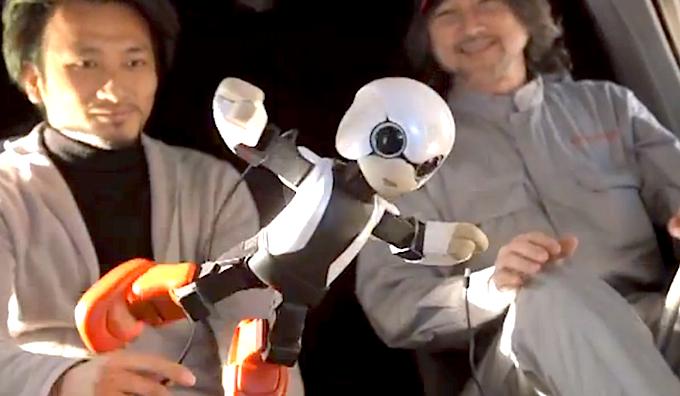
When Japanese astronaut Koich Wakata arrives at the International Space Station (ISS) later this year, waiting to greet him will be a small robot called Kirobo. Wakata and Kirobo are set to spend many happy hours shooting the breeze together, admiring views of the Earth and generally hanging out just like any other pair of pals.
The world’s first talking humanoid astronaut blasted into space from Japan Sunday morning on a mission to the ISS. Kirobo, which stands 34 centimeters from head-to-toe and weighs only 1 kilogram, is traveling to the ISS together with five tons of supplies for the current crew, the Japan Aerospace Exploration Agency (JAXA) said.
Designed by Tomotaka Takahashi of the University of Tokyo’s Research Center for Advanced Science and Technology (RCAST), Robo Garage of Kyoto University, and ad firm Dentsu, Kirobo and Wakata will conduct the first ever space-based communication experiments between a robot and a human.
Emotional
The talking robot features voice recognition capabilities and telecommunications functions. The ability to process natural language and respond to different facial expressions should also serve to make conversations more natural. Kirobo will even show emotion when it meets with Wakata in space as the pair are already acquainted with one another having met prior to the robot’s departure on Sunday. Yes, there could be tears at the reunion, or whatever Kirobo is designed to do in such emotional circumstances.
Another of Kirobo’s mission aims is to see how, or indeed if, machines like this can be a source of emotional support for people isolated over lengthy periods of time. Japan’s aging population means its citizens are living increasingly solitary lives and so researchers believe robots that can interact and show emotion could prove invaulable in the future.
“I wish for this robot to function as a mediator between a person and machine, or a person and the Internet, and sometimes even between people,” creator Takahashi said.
Prior to launch, Kirobo described his mission to the ISS as “one small step for me, a giant leap for robots.”
[via BBC]
Editors' Recommendations
- Crewed Soyuz launch to space station suffers rare late abort
- How to watch Crew-8 arrive at the space station tonight
- How to watch SpaceX Crew-8 launch to the space station tonight
- Watch this astronaut’s ‘space waltz’ on the ISS
- Homeward bound private astronaut shares gorgeous night shots of Earth


